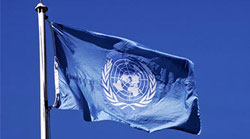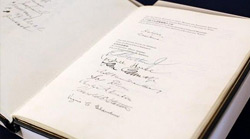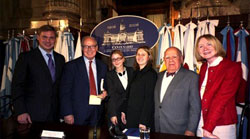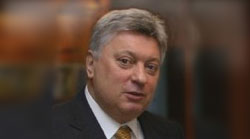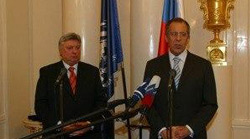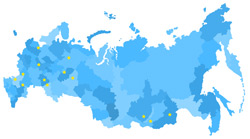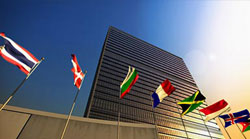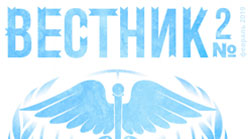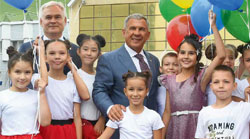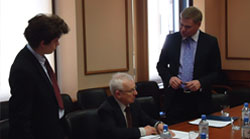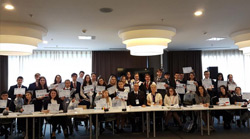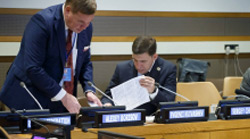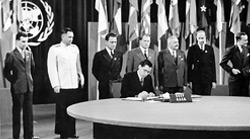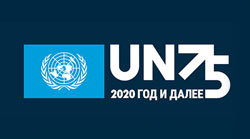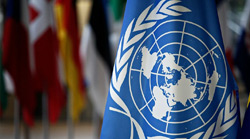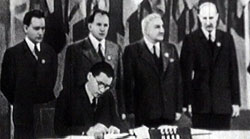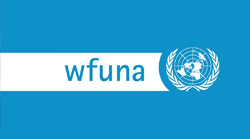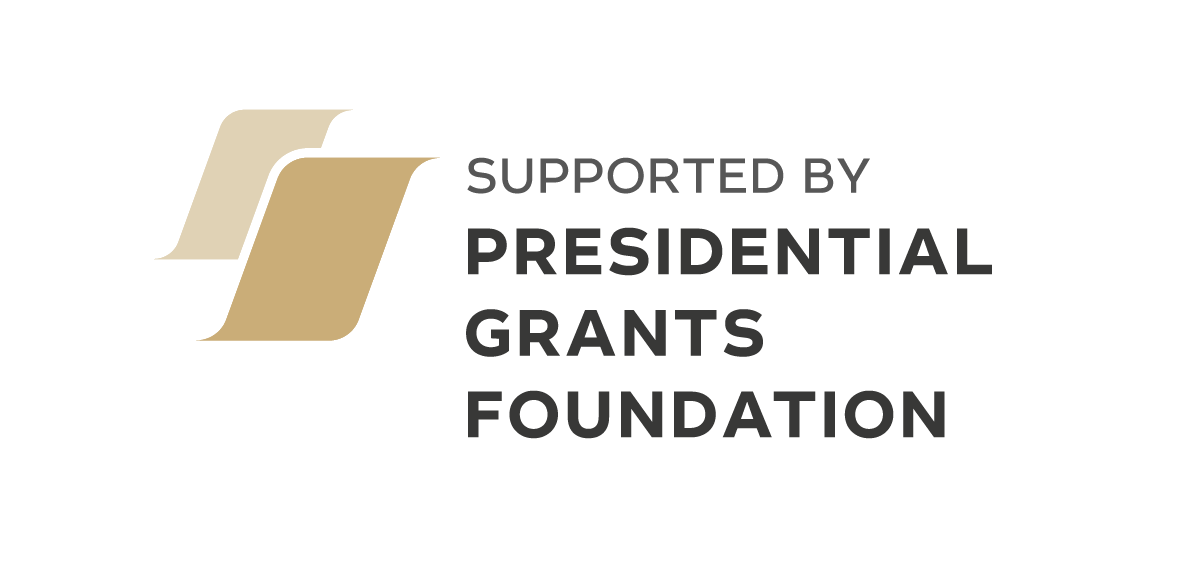The Russian United Nations Association assigns a special place of honor to young people in its projects and programs. The theme of sustainable development runs like a red thread through all the activities of the UN RAS, implementing a number of initiatives aimed at bringing together talented young people in order to create platforms for the exchange of experience and best practices along with specific projects.
 It was the Association that brought to Russia the idea of holding the UN Youth Models. The UN model is a synthesis of a role-playing game and an international conference, during which the participants reproduce the work of real UN bodies for several days, acting as official representatives of the UN member states. The main Russian model is the Moscow International Model UN named after Vitaly Churkin, which is held annually in April within the walls of the Moscow State Institute of International Relations (MGIMO) of the Russian Ministry of Foreign Affairs.
It was the Association that brought to Russia the idea of holding the UN Youth Models. The UN model is a synthesis of a role-playing game and an international conference, during which the participants reproduce the work of real UN bodies for several days, acting as official representatives of the UN member states. The main Russian model is the Moscow International Model UN named after Vitaly Churkin, which is held annually in April within the walls of the Moscow State Institute of International Relations (MGIMO) of the Russian Ministry of Foreign Affairs.
The Russian United Nations Association is also hosting Regional UN Models in Yekaterinburg, Vladivostok, Samara, Astrakhan, Ufa, Kazan, Krasnoyarsk, Tyumen and St. Petersburg. During the simulations, more than tens of thousands of Russian students and school children took part in them.
History of the Model Movement
Models began to be conducted even before the existence of international organizations, and the first model was carried out in the USA. The American Senate carried out its work in 1789. This institution had its own procedure for meetings, so the colleges paid great attention to this issue.
Of course, in order to prepare a senator, it is necessary to give a person knowledge in the field of jurisprudence, economics, political science, history, and international relations. However, theory must be alternated with practice, for which the Senate models were carried out. In general, they are held today, as well as models of other legislative bodies of different countries.
Models of international organizations
The forerunner of the UN model was the model of the League of Nations. In 1921, a group of Oxford University students organized a meeting of the "International Assembly". The event was significant, and even the Observer magazine published an article called "Geneva at Oxford".
This model was organized by Mir Mahmoud, an Oxford student, originally from Amritsar (India). He understood the need for further development of the model movement, so in 1922 Mir Mahmud came to Harvard, where he spoke to representatives of the Free Student Club.
 After the Club supported Mir Mahmud's initiative, in 1923 a model "International Assembly" was held at Harvard. One of the main issues discussed by the delegates was the issue of opium trafficking. However, in the mid-20s, the conduct of models was less active.
After the Club supported Mir Mahmud's initiative, in 1923 a model "International Assembly" was held at Harvard. One of the main issues discussed by the delegates was the issue of opium trafficking. However, in the mid-20s, the conduct of models was less active.
A new stage in the development of the model movement falls on 1945, the year the United Nations was founded. However, models of the League of Nations are held today.
The first model UN was held in 1947 at Swarthmore College (Pennsylvania). It was attended by 150 delegates from 41 colleges. One committee was modeled - the General Assembly.
In 1949, a model UN was held within the walls of New York's St. Lawrence University. The ideological organizer was Gary Reif, adviser to the American delegation at the San Francisco conference in 1945 and at the UN conference in London in 1945-1946.
In 1968, through the efforts of Dutch students and teachers, a similar practice appeared in Europe - the European International Model UN was held in The Hague, which is successfully functioning today.
Although the modeling movement was originally developed in the United States, in the 1990s models began to be carried out in East and South Asia, the Middle East, and South Africa.
Currently, the Model community keeps thriving: there are over 50 organizations in Europe and over 150 in the US.
Model movement in Russia
The first Russian Model UN was held in Moscow in 1990 - it was a model that is now called the Moscow International Model UN. IN AND. Churkin.
It is important to note that initially the organizers included the general secretary and several activists. Today the structure of the Secretariat is much broader and includes separate sectors and working groups.
The scale of the event has also changed. Today the Moscow International Model UN named after IN AND. Churkina is the largest model UN in Eastern Europe, annually it brings together more than seven hundred delegates from all continents. The work is conducted in the six official languages of the UN, which gives future diplomats the opportunity to improve their language skills. Developed infrastructure, high level of organization of the cultural program, open information policy Models allow participants to concentrate on work in committees without wasting valuable time on organizational issues.
What are the Models teaching to young people?
Communicate, jointly solve complex and topical problems, negotiate, seek and find compromises, speak to an audience, prepare resolutions, understand international political trends.
How are Models conducted?
Model UNs are held according to the same rules as real UN meetings, and the same questions are discussed at them. Young people discuss the acute problems of our time, look for answers to the most important questions of today, and see from their own experience how difficult it is sometimes to reach a compromise in international cooperation.
Model UN today
Model UN is an exciting role—playing game in which students and high school students reproduce the work of United Nations bodies for five days.

Participants of the Model UN - delegates, chairmen, observers and experts - act as official representatives of the UN member countries and members of international organizations who came to the conference to discuss issues on the agenda of their committee. At the Model, delegates abstract from a personal point of view and defend the official position of the country they represent, observe diplomatic etiquette. The ultimate goal of each committee is to adopt a resolution on the issue.
But most importantly:
- Model UN is a close-knit team of like-minded people.
- The Model UN is friendship. The strongest friendship, overcoming the borders of states and continents, languages and cultures, times and ages.
- The international youth movement of the Model UN covers many countries, and its participants are a variety of young people who are united by the desire to make this world a better place.
- Model UN is a school. The best school that opens up a whole world of ideas, opinions, impressions, providing unique opportunities for self-realization and self-expression, testing and development of intellectual and creative abilities, erudition and creative thinking.
- Model UN is life. The UN model helps to realize the significance of one's future and to feel oneself a part of the world community — a necessary, unique, unrepeatable part of it.
Register as a delegate to the Moscow International Model UN. Vitaly Churkin and get acquainted with the history of the model movement on the official website: http://modelun.ru.
A selection of video materials dedicated to the work of the Moscow international Model UN Vitaly Churkin:
We also bring to your attention photos from the grand opening of the XX Moscow International Model UN. Vitaly Churkin posted on the MGIMO website https://mgimo.ru/about/news/main/mimun-2019










